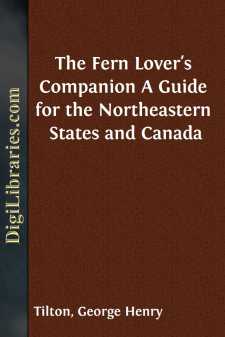Categories
- Antiques & Collectibles 13
- Architecture 36
- Art 48
- Bibles 22
- Biography & Autobiography 813
- Body, Mind & Spirit 142
- Business & Economics 28
- Children's Books 14
- Children's Fiction 11
- Computers 4
- Cooking 94
- Crafts & Hobbies 4
- Drama 346
- Education 46
- Family & Relationships 57
- Fiction 11829
- Games 19
- Gardening 17
- Health & Fitness 34
- History 1377
- House & Home 1
- Humor 147
- Juvenile Fiction 1873
- Juvenile Nonfiction 202
- Language Arts & Disciplines 88
- Law 16
- Literary Collections 686
- Literary Criticism 179
- Mathematics 13
- Medical 41
- Music 40
- Nature 179
- Non-Classifiable 1768
- Performing Arts 7
- Periodicals 1453
- Philosophy 64
- Photography 2
- Poetry 896
- Political Science 203
- Psychology 42
- Reference 154
- Religion 513
- Science 126
- Self-Help 84
- Social Science 81
- Sports & Recreation 34
- Study Aids 3
- Technology & Engineering 59
- Transportation 23
- Travel 463
- True Crime 29
The Fern Lover's Companion A Guide for the Northeastern States and Canada
Categories:
Description:
Excerpt
PREFACE
A lover of nature feels the fascination of the ferns though he may know little of their names and habits. Beholding them in their native haunts, adorning the rugged cliffs, gracefully fringing the water-courses, or waving their stately fronds on the borders of woodlands, he feels their call to a closer acquaintance. Happy would he be to receive instruction from a living teacher: His next preference would be the companionship of a good fern book. Such a help we aim to give him in this manual. If he will con it diligently, consulting its glossary for the meaning of terms while he quickens his powers of observation by studying real specimens, he may hope to learn the names and chief qualities of our most common ferns in a single season.
Our most productive period in fern literature was between 1878, when Williamson published his "Ferns of Kentucky," and 1905, when Clute issued, "Our Ferns in Their Haunts." Between these flourished D.C. Eaton, Davenport, Waters, Dodge, Parsons, Eastman, Underwood, A.A. Eaton, Slosson, and others. All their works are now out of print except Clute's just mentioned and Mrs. Parsons' "How to Know the Ferns." Both of these are valuable handbooks and amply illustrated. Clute's is larger, more scholarly, and more inclusive of rare species, with an illustrated key to the genera; while Mrs. Parsons' is more simple and popular, with a naive charm that creates for it a constant demand.
We trust there is room also for this unpretentious, but progressive, handbook, designed to stimulate interest in the ferns and to aid the average student in learning their names and meaning. Its geographical limits include the northeastern states and Canada. Its nomenclature follows in the main the seventh edition of Gray's Manual, while the emendations set forth in Rhodora, of October, 1919, and also a few terms of later adoption are embodied, either as synonyms or substitutes for the more familiar Latin names of the Manual, and are indicated by a different type. In every case the student has before him both the older and the more recent terms from which to choose. However, since the book is written primarily for lovers of Nature, many of whom are unfamiliar with scientific terms, the common English names are everywhere given prominence, and strange to say are less subject to change and controversy than the Latin. There is no doubt what species is meant when one speaks of the Christmas fern, the ostrich fern, the long beech fern, the interrupted fern, etc. The use of the common names will lead to the knowledge and enjoyment of the scientific terms.
A friend unfamiliar with Latin has asked for pointers to aid in pronouncing the scientific names of ferns. Following Gray, Wood, and others we have marked each accented syllable with either the grave (`) or acute (´) accent, the former showing that the vowel over which it stands has its long sound, while the latter indicates the short or modified sound. Let it be remembered that any syllable with either of these marks over it is the accented syllable, whose sound will be long or short according to the slant of the mark....


